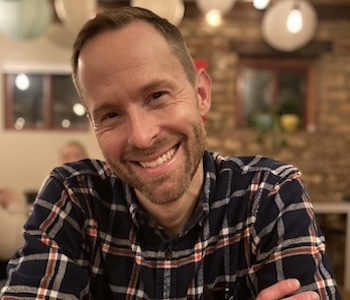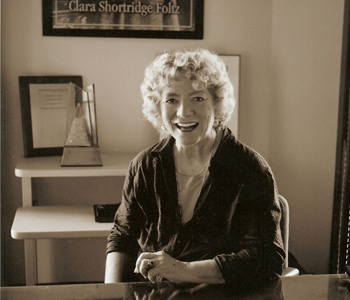Mark C. Taylor
Field Notes from Elsewhere: Reflections on Dying and Living
Columbia University Press
288 pages, 9 x 6 inches
ISBN 978 0231147804
Having taught philosophy and religion at Williams College for thirty-six years and now at Columbia University, I had long considered writing a book that would bring together abstract ideas and the concrete experiences and dilemmas of human life in the form of a philosophical memoir. For many people, the writings of Kant, Hegel, Kierkegaard, Nietzsche, Heidegger and Derrida, which lie at the heart of my academic work, are so abstract that they often seem irrelevant. Since my student days, however, I have always found that these writers illuminate questions we all ask and decisions we all face. Over the years, my intellectual life has been suspended between Hegel, who is a speculative systematic thinker par excellence, and Kierkegaard, who probes individual subjectivity with unparalleled insight.
I have written many books over the years on subjects as diverse as philosophy, religion, literature, literary criticism, art, architecture, technology, and economics. In addition, I have published artistic books, done some art and even had an exhibition, Grave Matters, at the Massachusetts Museum of Contemporary Art. Though I did not realize it at the time, there is a coherence to all this work that has only become clear as I look back.
Of my latest two books, After God represents an effort to integrate the many strands of my thought. After God is my most Hegelian book. Field Notes from Elsewhere is, by contrast, my most Kierkegaardian book.
Field Notes is a meditation on personal experiences, friends, family, teaching and many other topics. I have also included 120 photographs that are either from family albums or that I took for the book. Rather than a continuous narrative, I tell the story in 52 chapters, each of which has an AM and a PM section. The book begins with a meditation on dawn and ends with reflections on dusk. I regard the book as a cross between a diary, a book of hours and a family photograph album. Each chapter is a three-or-four-page meditation on paired topics like: Premonitions/Postcards, Abandonment/ Mortality, Pleasure/Money, Solitude/Loneliness, Failure/Success, Imperfection/ Vulnerability, Love/Fidelity, Hope/Despair.

My intellectual life has been suspended between Hegel, who is a speculative systematic thinker par excellence, and Kierkegaard, who probes individual subjectivity with unparalleled insight.
The point of departure for the book is a severe illness I suffered in December 2005. As a result of a biopsy, I went into septic shock and suddenly fell critically ill. For two days a team of forty doctors, many of whom did not think I would live, worked to save my life. During the first night, I realized things could go either way but thought I was out of the woods by morning. I was not; my condition remained serious and would not stabilize for several weeks. After five days in the intensive care unit and ten in the hospital, I was released. Five months later, I underwent surgery for cancer. These experiences have changed my life in ways I still am trying to understand.
Though my experiences were severe, they are not unique; indeed, everybody faces many similar difficulties in life. In Field Notes, I have tried to convey how the lessons I have learned from forty years of reading, writing and teaching help us understand and cope with such experiences. My approach is not analytic but narrative; that is to say, I make my points by telling stories about myself, family, friends, students and colleagues. Needless to say, such a book raises difficult questions about what to reveal and what to conceal about oneself as well as others.
The tone of the book is meditative and I hope it will provide the occasion for readers to reflect on how the questions I ponder affect their own lives.
This not a book that should be read quickly or straight through. To the contrary, it should be read slowly, picking it up and putting it down and giving oneself time to think. Kierkegaard always said that his works were mirrors in which people could see their own lives reflected. I hope Field Notes will also work this way.
Field Notes lends itself to browsing, starting and stopping here and there. One of the interesting things about early responses to the book is that people’s interests and concerns draw them to different sections. Instead of trying to summarize various sections that might attract different people, it is possible to get a better sense of the book by reading the chapter from which the book takes its title, “Elsewhere.”
I have been elsewhere. The distance is short though its crossing takes a lifetime. Elsewhere is not far – it is near, ever proximate, never present. It is a place or placeless place that is strange because it is so familiar. Rather than beyond, elsewhere is between the places I ordinarily dwell or think I dwell. When journeying elsewhere, you do not leave the here-and-now; it is as though elsewhere were folded into the present in a way that disrupts its presence. The everyday world does not disappear when you linger elsewhere – all you care about approaches from a distance that increases as it diminishes. Gradually you begin to realize that nothing is merely itself –everything, everybody is always also something else, someone else, somehow else, somewhere else.
When you are elsewhere, vision, and with it awareness, doubles and, as you recognize this doubling, doubles yet again. Far from confusing, this doubling and doubling of doubling clarifies by disclosing an elsewhere that is always there by not being there – like a looking-glass world into which you can always slip but can never leave. The mind is split, divided, torn not between consciousness and the unconsciousness but within consciousness itself. Two in one, one in two – neither separated nor unified, neither many nor one. Just as the everyday does not disappear when you are elsewhere, so elsewhere does not vanish when you attempt to come back. Once you have been elsewhere, you can never come back because elsewhere always returns with you.

People’s age and experience will influence how they respond to this book more than to others. Moreover, the response to the book will change over time.
I hope Field Notes will find a wide audience with diverse backgrounds. People’s age and experience will influence how they respond to this book more than to others. Moreover, the response to the book will change over time.
Who, then, can I imagine reading this book? Perhaps
A mother coping with the birth of a deformed child.
A son dealing with the raging grief of a father who has lost his wife of fifty years.
A young woman responding to the news that she has inoperable brain cancer.
A young man sitting at the bedside of his friend suffering DTs from heroin withdrawal.
Parents struggling with the problem of what to give and what to withhold from their children.
A father playing baseball with his son.
A middle-aged man consoling his lifelong mentor as he struggles to deal with his wife’s Alzheimer’s disease.
A mother dropping off her daughter for the first day of school.
A man looking back over a failed career.
A student trying to understand the betrayal of her teacher.
A couple burying their dead child.
A melancholy youth learning to laugh.
In the chapter titled “Night,” I write:
There is not one night; there are two. The first night is the night that is the opposite of day and is familiar to all of us. At the end of a long day, we welcome this night and look forward to the renewal it brings…. The other night is different; it is, paradoxically, within as well as beyond what we ordinarily know as day and night. Far from familiar, it is forever strange; never reassuring, it is endlessly fascinating…. This night gives me no rest even when I am asleep.
We all know this night even if we do not give it a name. If Field Notes from Elsewhere: Reflections on Dying and Living helps people get through this night beyond night, it will have accomplished its purpose.




We don't put paywalls. We don't distract you with ads. We don't sell your data.
Please help to keep this running!